
Picking the Best Pastry Brush
Shop All Pastry Brushes
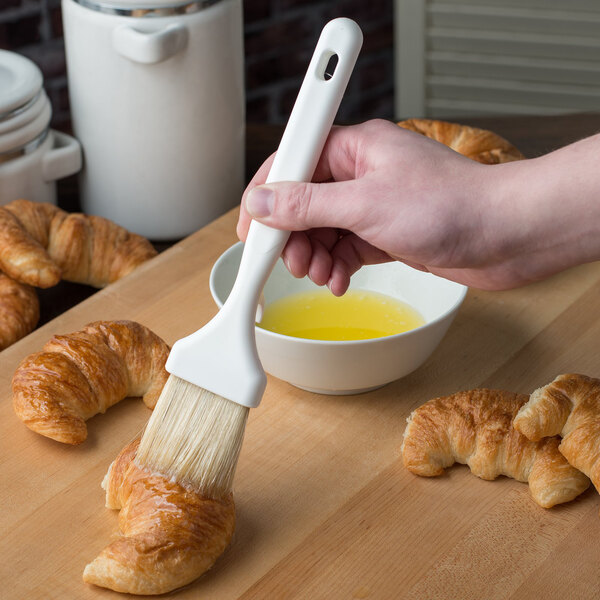
What is a Pastry Brush?
Pastry brushes are helpful for applying sauces, oils, glazes, and other liquids to dishes before and during the cooking process. Using a baking brush gives you better control over the ingredient you add. Plus, it helps you spread an even coating for a consistent product in a manner that's clean and efficient.
What is a Pastry Brush Used for?
The best breads achieve a golden-brown crust from an egg wash or melted butter spread on top before they go in the oven. Or when you need to grease a pan, using a food brush helps you do it quickly and cleanly. If you've added too much seasoning, a brush can even be dipped in water and run over your dish to remove the excess seasoning. The uses for a pastry brush in your kitchen can stack up quickly.

Pastry Brush vs Basting Brush
Don't let the name fool you, pastry brushes are also known as basting brushes. While both pastry brushes and basting brushes are designed to spread sauces and glazes more efficiently over foods, it is important that you use a designated pastry brush only for baking applications and a basting brush for meat and vegetable basting. Using the same brush can accidentally transfer flavors between your pastry and meat products, leading to cross-contamination.
How to Clean a Pastry Brush by Hand
- Hand wash the brush immediately after use. If your kitchen is too busy, at least soak it in warm water until you have time to clean it properly. (This prevents liquid ingredients from hardening.)
- Run the brush under hot water and gently rub bristles with dish detergent. Always try to remove oils as quickly as possible as they can turn the brush rancid, making it unfit for use.)
- Keep an eye on the base of your baking brush, ensuring no food or grease remains lodged where the bristles meet the handle.
- Rinse the brush and treat it with sanitizer.
- Leave it in a clean place to air dry.
Shapes & Sizes of Pastry Brushes
Consider the following shapes and sizes below to figure out which type of baking brush your process requires.

Small Brushes
Work best for small items or for tasks that require more detail and care
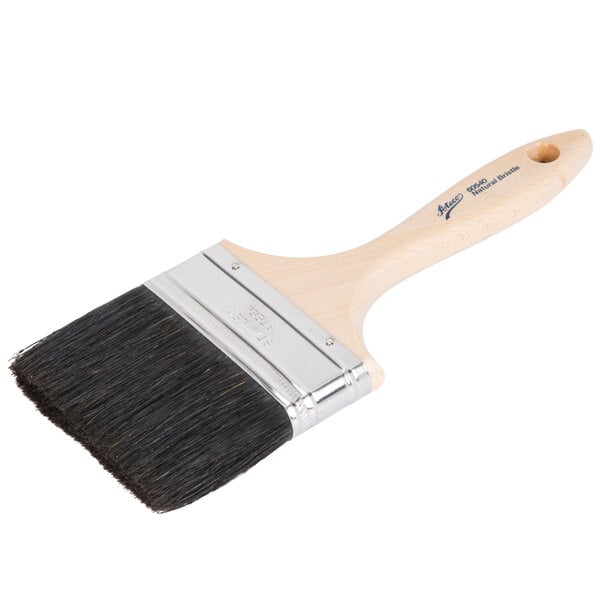
Large Brushes
Great for holding a lot of liquid and spreading across large surface areas
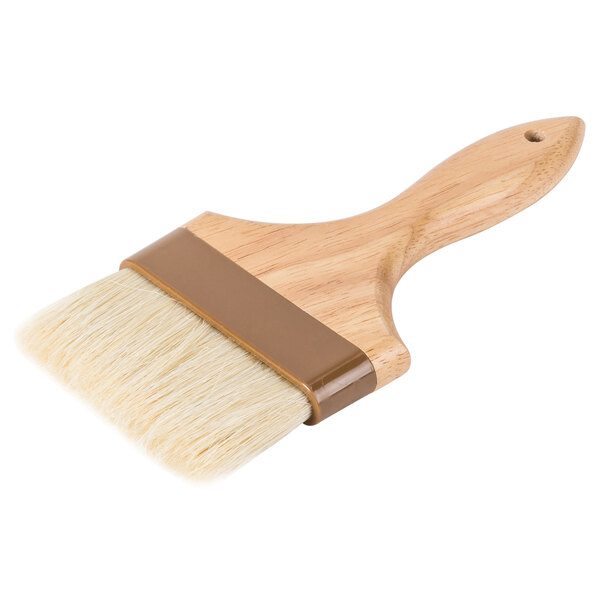
Wide Brushes
Perfect for covering a larger amount of product
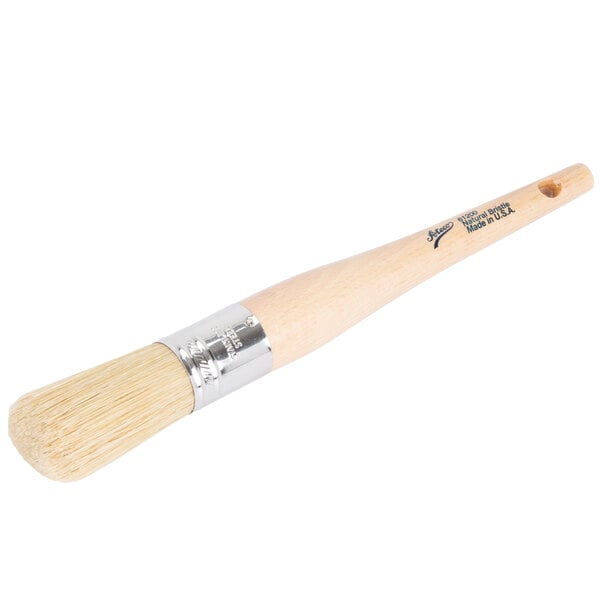
Round Brushes
Best for smaller pastries, more detailed glazing tasks, or plate decoration
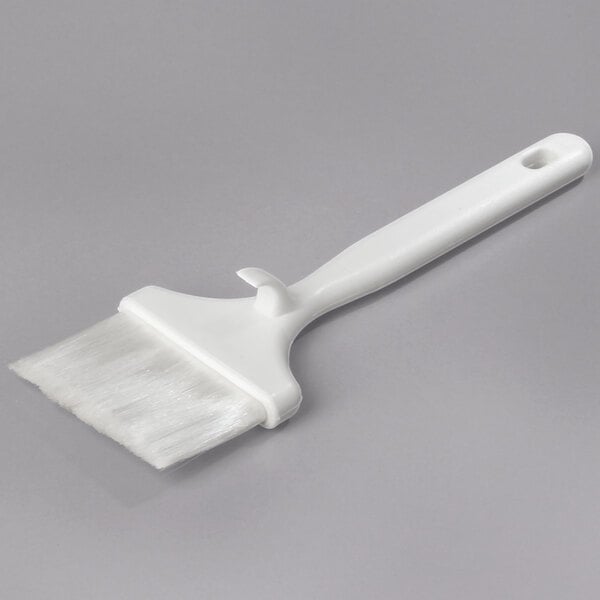
Hook Brushes
Can be hung for storage or along the edge of your plate for cleaning
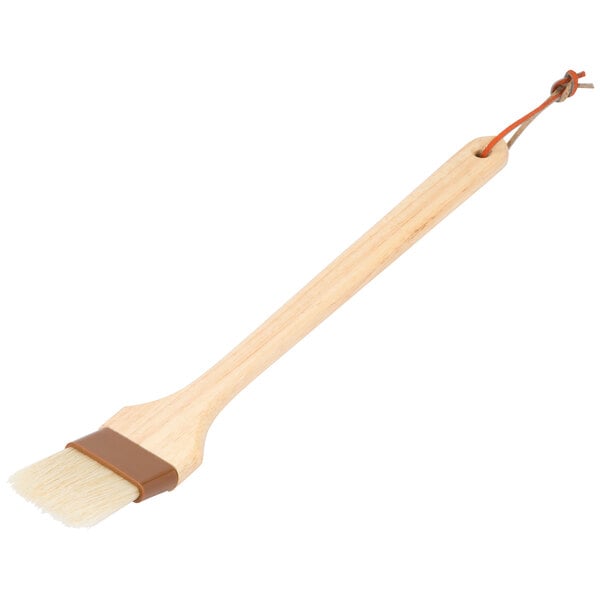
Angled Brushes
Designed with tapered bristles to provide detailed, precise strokes
Pastry Brush Bristle Types
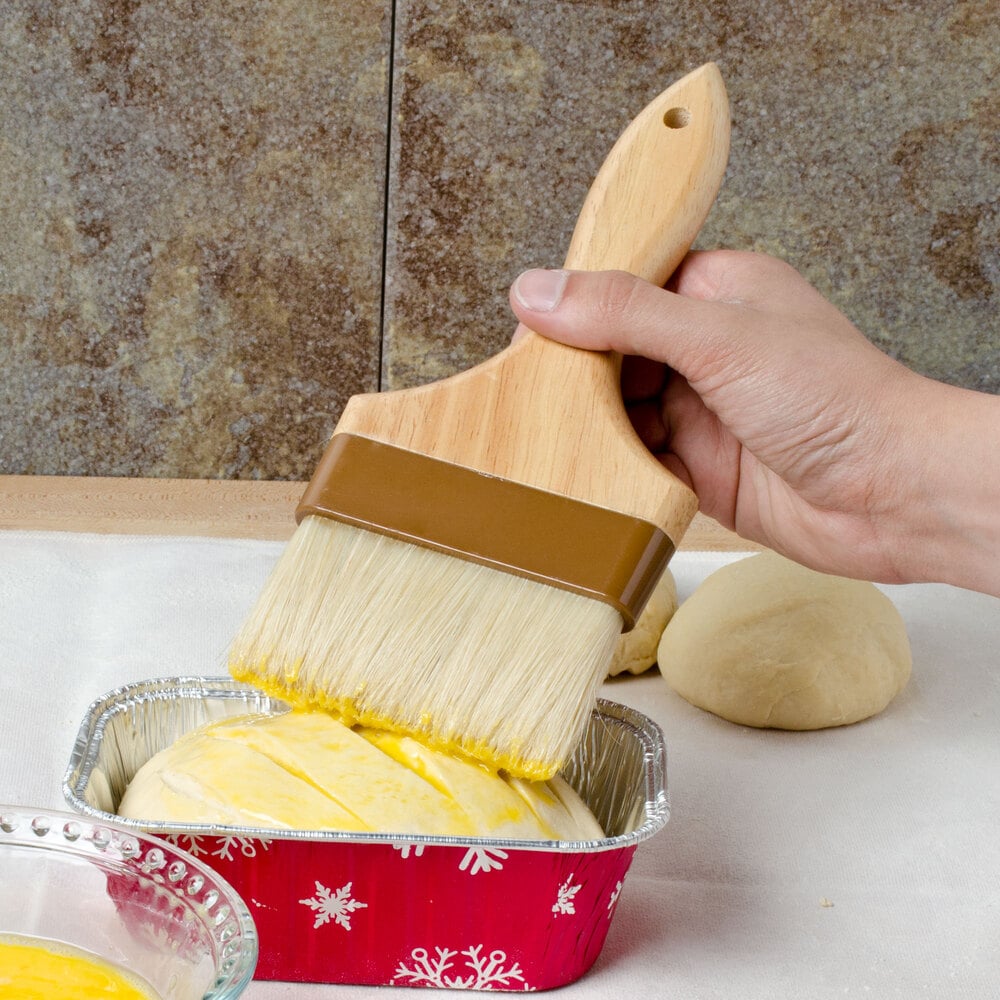
- Soft texture is great for spreading thin liquids like oils or marinades
- Water-resistant design absorbs oils
- Holds more liquid than synthetic bristles

- Strong bristles are ideal for spreading thick liquids
- Retains a high amount of liquid
- Minimal risk of bristles falling out

- Flexible bristles are ideal for spreading thick sauces
- Designed to withstand high heat applications
- Easy to clean compared to natural hair
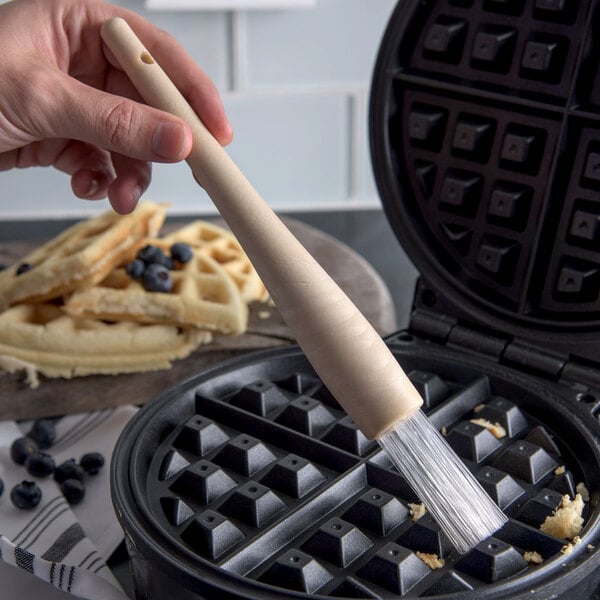
- Delicate bristles mimic boar hair
- Designed for use up to 500 degrees Fahrenheit
- Best for spreading thin liquids like oils or marinades
Pastry Brush Handles

- Sturdy to grip
- Comfortabable to hold
- Stylish for front of house use

- Easy to clean
- Strong for tough tasks
- Durable for lasting use

When to Replace Your Pastry Brush
Shedding bristles, especially if using an animal hair food brush, is a big indicator you need a new brush. Serving food with bristles in it can cause major problems for your restaurant.
If your brush is also melted, torn, stained, or otherwise, bristles that are damaged will hinder your ability to apply liquids. The bristles should be spread evenly and laid flat for optimal use. Brushes coming in contact with cooking oils can become rancid over time. This occurs because cooking oils left on the brush break down and spoil, resulting in a sour odor and taste that can transfer to food.

How to Maintain Your Pastry Brush
Cleaning and maintenance is simple and will not only prolong the life of your brush, but also cut down on the spread of bacteria, preventing foodborne illnesses. Brushes with plastic handles are easy to wipe down and clean. However, brushes with wooden handles must be carefully handwashed to ensure they stay clean.
Animal hair pastry brushes must be washed by hand, but some synthetic brushes are dishwasher safe. If cleaning your brushes this way, be sure to place them securely in the machine so they are not damaged and remove and dry them as quickly as possible to prevent rust if your brush has any metal parts.
Related Resources

Types of Pastry Bags and Tips
Commonly used for decorating cakes, cupcakes, and other baked goods, pastry bags and tips are versatile tools that can be used for many different tasks in the kitchen. For example, you can use pastry bags for piping mashed potatoes, meringue, dough, and much more. In this guide we'll go through the different types of pastry bags and piping tips and what each is used for to help you find the perfect options for your bakery or catering business.

Types and Styles of Baking Cups
Baking cups are essential supplies for any bakery . These versatile cups are used to line cupcake or muffin pans and prevent the batter from sticking to the sides. They come in a range of sizes, colors, and materials to suit a variety of confections and create unique presentations. Shop All Baking Cups

High Altitude Baking Adjustments
High altitude baking can be a challenging task if you're starting a new bakery . The lower air pressure and higher elevation can greatly affect the outcome of your baked goods. But with a few adjustments, you can achieve delicious and perfectly baked treats even at high altitudes. We'll explore the various factors that come into play when baking at high altitudes and provide you with helpful tips and adjustments to ensure your baking success. Shop All Commercial Bakery Supplies How Does High Altitude Affect Baking? High altitude begins at approximately 3,500 feet or more above sea level. As altitude increases, the atmospheric pressure decreases, which affects baking in several ways due to air pressure and moisture content. The lower air pre
- Topics 1346
- Industrial 55
- Troubleshooting Guides 21
- Restaurant Management 128
- Bar Management 55
- Catering Tips 35
- Bakery Management 42
- Food Trucks & Concessions 49
- Advertising & Marketing 37
- Eco-Friendly Tips 11
- Facility Layout & Design 41
- Coffee Shop Tips 28
- Installation & Maintenance 51
- Janitorial & Pest Control 30
- Safety & Sanitation 88
- Startup Tips 104
- Menu Design 10
- Kitchen & Cooking Tips 81
- Hospitality Management 23
- Pizza & Sandwich Shop Tips 36
- Smallwares 37
- Food Prep 88
- Tabletop Items 17
- Disposables 22
- Calculators & Tools 6
- Consumables 52
- Warewashing & Laundry 18
- Cooking Equipment 90
- Food Storage & Refrigeration 51
- Beverage Equipment 34
- Office Supplies 6
- Resource Type
- In-Depth Articles272
- Buying Guides296
- How-Tos93
- Product Reviews77


